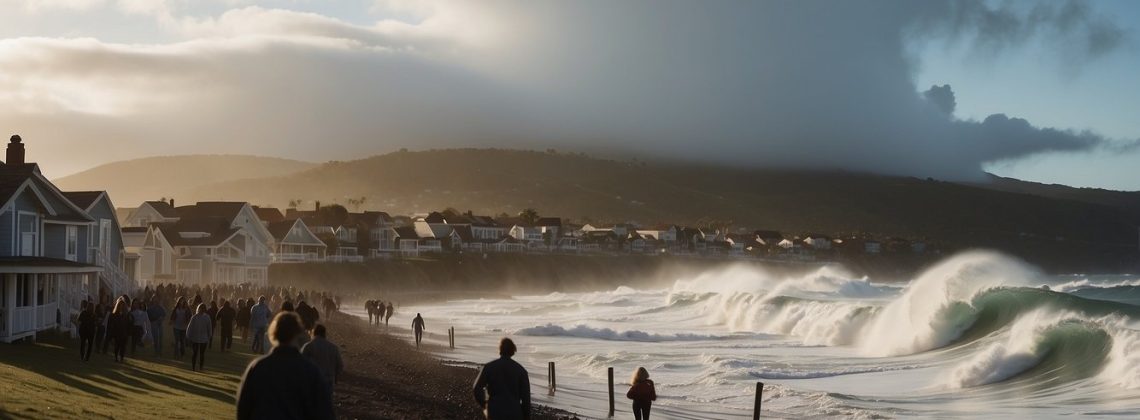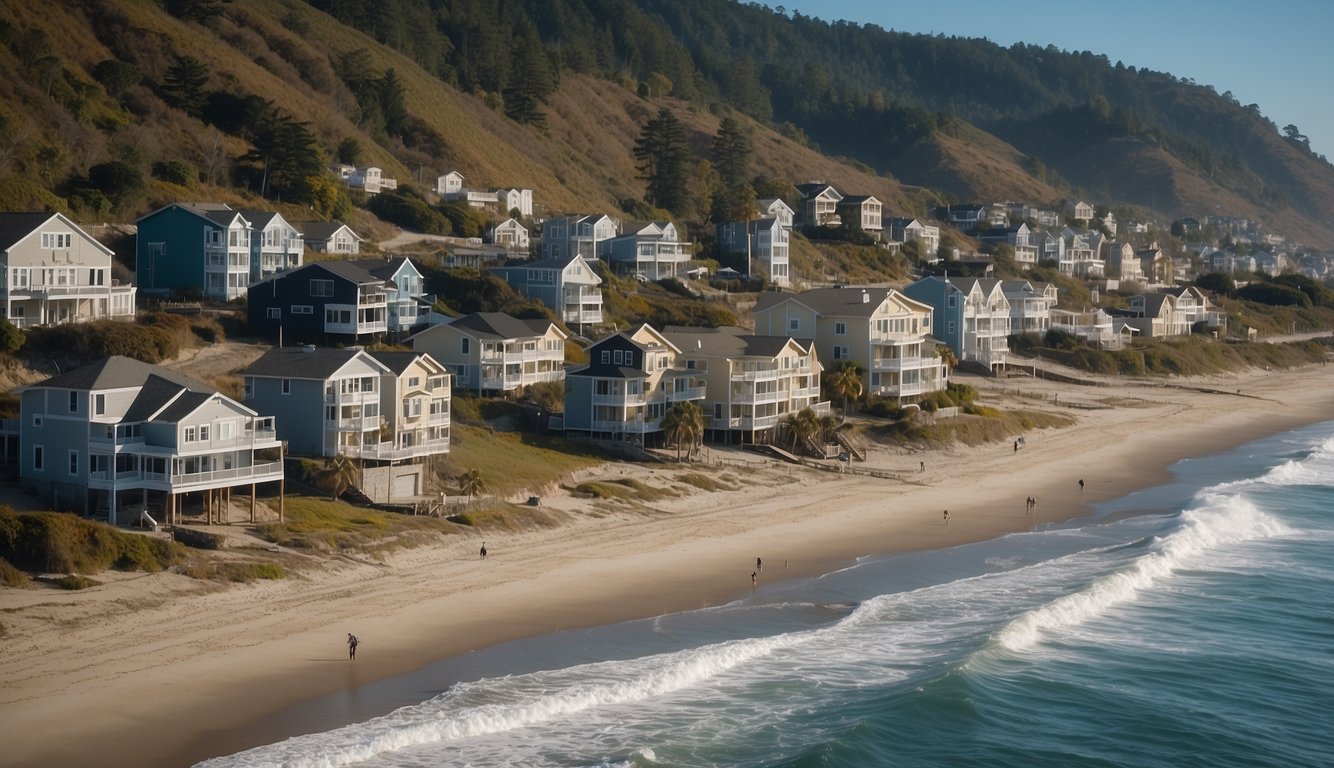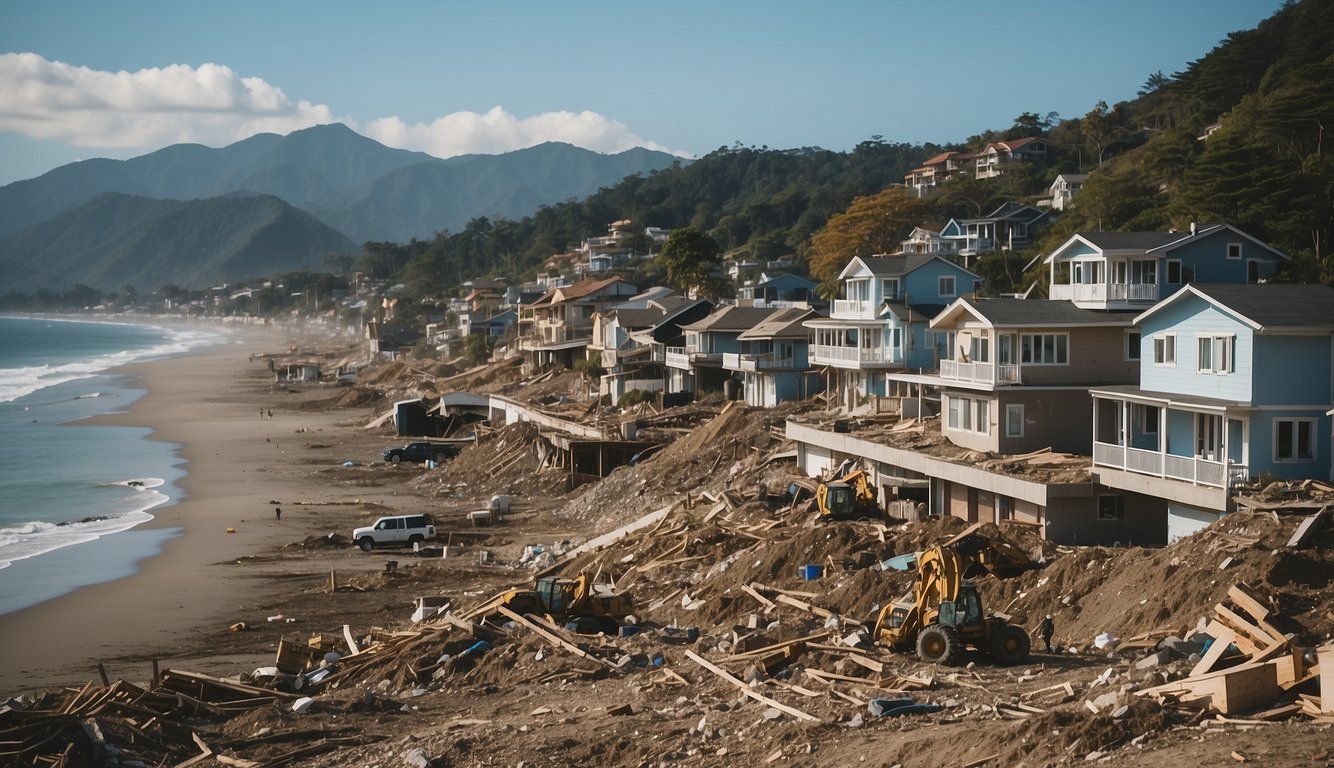
Living near the coast can be a wonderful experience, but it can also be risky. One of the most significant threats to coastal communities is tsunamis. A tsunami is a series of ocean waves caused by earthquakes, landslides, or volcanic eruptions. These waves can travel at high speeds and cause significant damage to coastal areas. Therefore, it is crucial to be prepared and know how to respond in case of a tsunami.
Understanding Tsunamis and Their Causes
Tsunamis are caused by a disturbance in the ocean, which can be triggered by a variety of natural events. The most common cause is an earthquake, but they can also be caused by landslides or volcanic eruptions. When a disturbance occurs, it creates a series of waves that can travel across the ocean at high speeds. These waves can be hundreds of feet high and can cause significant damage to coastal communities.
Risk Assessment and Early Warning Systems
To prepare for a tsunami, it is essential to understand the risk of a tsunami in your area. You can check with your local emergency management agency to determine your risk. They can also provide information on early warning systems and evacuation routes. Early warning systems can provide critical information about the size, location, and expected arrival time of a tsunami. With this information, you can take immediate action to protect yourself and your family.
Key Takeaways
- Tsunamis are caused by natural events such as earthquakes, landslides, or volcanic eruptions.
- Early warning systems can provide critical information about the size, location, and expected arrival time of a tsunami.
- To prepare for a tsunami, it is essential to understand the risk of a tsunami in your area and have a plan in place for evacuation.
Understanding Tsunamis and Their Causes
Tsunamis are a type of natural disaster that can cause widespread damage and loss of life. They are typically caused by earthquakes, volcanic eruptions, or landslides that occur under the ocean. When these events happen, they can displace large amounts of water, which then creates a series of waves that can travel across the ocean at high speeds.
The Science of Tsunamis
Tsunamis are unique in that they are not like regular waves that you might see at the beach. Instead, they are more like a wall of water that can be tens of feet high and can travel at speeds of up to 500 miles per hour. When a tsunami wave reaches the shore, it can cause massive flooding and destruction.
The size and strength of a tsunami depend on several factors, including the size of the earthquake or other event that caused it, the depth of the water where the event occurred, and the distance from the shore where the wave was generated.
Historical Tsunami Events
There have been many historical tsunamis that have caused widespread damage and loss of life. One of the most well-known tsunamis occurred in 2004 in the Indian Ocean, which was caused by a massive earthquake off the coast of Sumatra, Indonesia. This tsunami killed over 200,000 people in 14 countries, making it one of the deadliest natural disasters in history.
Other notable tsunamis include the 2011 Tohoku earthquake and tsunami in Japan, which killed over 15,000 people, and the 1960 Valdivia earthquake and tsunami in Chile, which was the largest earthquake ever recorded and caused widespread destruction throughout the Pacific Ocean.
It is important to understand the science behind tsunamis and historical events in order to be better prepared for future disasters. By knowing what causes tsunamis and how they behave, you can take steps to protect yourself and your loved ones in the event of a tsunami.
Risk Assessment and Early Warning Systems
When it comes to surviving a tsunami, early warning systems are crucial. The first step in preparing for a tsunami is to identify the hazard zones. This involves assessing the likelihood of a tsunami occurring in a particular area and the potential impact it could have. NOAA and the Intergovernmental Oceanographic Commission are two organizations that provide information on tsunami hazard zones.
Identifying Tsunami Hazard Zones
To identify tsunami hazard zones, scientists use a combination of historical data, computer models, and on-site observations. They look at factors such as the location of fault lines, the depth of the ocean floor, and the size and frequency of past tsunamis. This information is used to create maps that show the areas that are most at risk.
If you live in a coastal area, it’s important to know whether you are in a tsunami hazard zone. You can find this information by checking with your local emergency management office or by visiting the NOAA or Intergovernmental Oceanographic Commission websites.
Tsunami Monitoring and Warning Signals
Once a tsunami has been detected, an official tsunami warning will be issued. This warning is typically issued by NOAA or a similar organization in your country. The warning will include information on the location and size of the tsunami, as well as the estimated time of arrival for different areas.
In addition to official tsunami warnings, there are also warning signals that you can look out for. These include:
- A noticeable rise or fall in sea level
- A loud roar, similar to the sound of an approaching train
- A sudden change in the direction or intensity of ocean currents
If you experience any of these warning signals, it’s important to move to higher ground immediately. Don’t wait for an official warning to be issued.
In conclusion, being prepared for a tsunami requires a combination of risk assessment and early warning systems. By identifying tsunami hazard zones and knowing the warning signals to look out for, you can increase your chances of surviving a tsunami.
Preparedness Strategies for Tsunami Threats

Tsunamis can be devastating, but with proper preparedness and response strategies, you can increase your chances of survival. Here are some key strategies to follow:
Developing an Emergency Plan
Having an emergency plan in place before a tsunami strikes is crucial. Your plan should include evacuation routes, safe locations, and emergency contact information. Make sure everyone in your household is aware of the plan and knows what to do in the event of a tsunami.
Education and Community Awareness
Education and community awareness are essential for tsunami preparedness. Make sure you and your community are aware of the warning signs of a tsunami, such as strong earthquakes, unusual sea level changes, or a loud roar like a jet engine. Stay informed through local news and weather reports, and make sure your community has an emergency alert system in place.
Evacuation Routes and Safety Zones
Identifying evacuation routes and safety zones is critical for surviving a tsunami. Know the safe areas in your community, such as high ground, and the routes to get there. If you live in a coastal area, make sure you know the location of the nearest evacuation shelter. Keep in mind that you may not have much time to evacuate, so it’s essential to be prepared and have a plan in place.
In summary, preparing for a tsunami threat involves developing an emergency plan, educating yourself and your community, and identifying evacuation routes and safety zones. By taking these steps, you can increase your chances of survival and protect yourself and your loved ones in the event of a tsunami.
Immediate Response Actions During a Tsunami

When a tsunami strikes, the immediate response actions you take can make a significant difference in your safety and that of others around you. In this section, we will go over some of the most crucial actions you can take during a tsunami.
Protecting Yourself and Others
The first thing you should do when you hear a tsunami warning is to protect yourself and others around you. If you are near the coast, move to higher ground immediately. Tsunamis can cause severe flooding, and being on high ground will help you stay safe.
If you are indoors, stay there and move to the upper floors of the building if possible. Try to find a sturdy piece of furniture to hide under, such as a desk or table. If you are outside, move to higher ground as quickly as possible and stay away from the coast.
Evacuation Procedures
If you are in an area that has been evacuated, follow the evacuation procedures provided by local officials. Do not try to return home until you have been given the all-clear. If you are in a vehicle, drive to higher ground as quickly as possible and avoid driving through flooded areas.
If you are unable to evacuate, seek shelter in a sturdy building on high ground. Do not try to swim or walk through floodwaters, as they can be dangerous and unpredictable.
In summary, protecting yourself and others and following evacuation procedures are crucial actions to take during a tsunami. Remember to stay calm, listen to local officials, and move to higher ground as quickly as possible to ensure your safety.
Post-Tsunami Recovery and Mitigation Measures

After a tsunami, the first step is to assess and repair the damage caused by the disaster. You should approach this task with caution and avoid entering buildings or areas that may be unstable. If you notice any damage to your property, make sure to document it with photos and videos, as it may be useful for insurance purposes.
Assessing and Repairing Damage
Assessing the damage after a tsunami is a crucial step in the recovery process. You should check for any structural damage to your property, including cracks in the walls or foundation. If you notice any damage, it is important to contact a professional to assess the situation and make any necessary repairs.
Health and Safety Concerns in Cleanup
Cleanup after a tsunami can be dangerous due to the risk of carbon monoxide poisoning from generators and other equipment. It is essential to take precautions to protect yourself and your family, such as wearing protective clothing and using proper ventilation.
Long-Term Mitigation Strategies
Long-term mitigation strategies can help prevent future disasters by reducing the impact of tsunamis on coastal communities. Land-use planning and disaster prevention measures can help ensure that communities are better prepared for future disasters.
In conclusion, recovering from a tsunami can be a challenging process, but with the right strategies in place, you can mitigate the damage and protect your family and community. By assessing the damage, taking precautions during cleanup, and implementing long-term mitigation strategies, you can ensure that your community is better prepared for future disasters.
Frequently Asked Questions
What actions should be taken immediately when a tsunami warning is issued?
A tsunami warning means that a tsunami is expected to hit the area soon. If you are in a coastal area and receive a tsunami warning, the first thing you should do is move to higher ground or inland as soon as possible. Do not wait for official instructions, as there may not be enough time. Listen to local news and follow instructions from local authorities.
How can individuals effectively prepare for a potential tsunami threat?
Being prepared can save lives when a tsunami strikes. Some ways individuals can prepare for a potential tsunami threat include:
- Knowing the signs of a potential tsunami, such as a sudden rise or fall in sea level, and listening to local news and weather reports.
- Having an emergency kit ready, including food, water, first aid supplies, and important documents.
- Knowing the evacuation routes and higher ground locations in the area.
- Practicing evacuation drills with family members and having a communication plan in case of separation.
What are the recommended safety measures to follow during a tsunami?
If you are caught in a tsunami, there are several safety measures you can take to protect yourself:
- Move to higher ground or inland as quickly as possible.
- Avoid going to the beach or waterfront to watch the tsunami.
- Stay away from buildings and structures that could collapse or be swept away by the waves.
- If you are in a boat, move to deeper water as soon as possible.
What steps are crucial to ensure safety after a tsunami has occurred?
After a tsunami has occurred, it is important to take the following steps to ensure safety:
- Listen to local news and weather reports for updates and instructions.
- Avoid entering damaged buildings or structures.
- Be aware of potential hazards, such as downed power lines and contaminated water.
- Follow instructions from local authorities regarding re-entry and recovery efforts.
Can tsunamis be prevented, and if not, how can their impact be minimized?
Tsunamis cannot be prevented, but their impact can be minimized through early warning systems, effective evacuation plans, and building resilient infrastructure. Coastal communities can also implement natural barriers, such as mangroves and coral reefs, to help absorb the impact of a tsunami.
What are the best practices for responding to and managing a tsunami emergency?
The best practices for responding to and managing a tsunami emergency include:
- Activating early warning systems and evacuating coastal areas as quickly as possible.
- Coordinating response efforts among local authorities, emergency responders, and community organizations.
- Providing medical care and assistance to those affected by the tsunami.
- Conducting damage assessments and implementing recovery efforts as soon as possible.

Leave a Reply